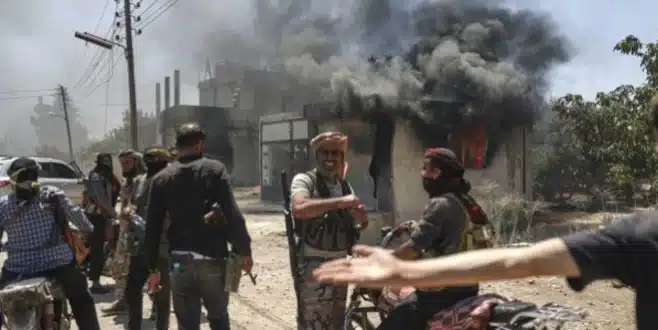Tensions flared once more in southern Syria on Friday as violence resumed between Druze militias and Sunni Bedouin groups, just days after a ceasefire had temporarily paused the conflict. Government troops, who had previously withdrawn under a truce deal, were reportedly preparing to redeploy in the region to restore order and stabilize state institutions.
Ceasefire Falters Amid Renewed Hostilities
According to Syrian officials speaking anonymously, government forces and Druze leaders agreed to the re-entry of security forces into the Druze-majority province of Sweida. Their mission: re-establish stability and safeguard key infrastructure following the collapse of an earlier ceasefire.
That truce, brokered Wednesday with support from the United States, Turkey, and regional Arab nations, was meant to end several days of heavy fighting. The initial clashes—sparked Sunday between Druze militias and local Bedouin tribes—quickly escalated after state security forces intervened in support of the Bedouins. Reports emerged of indiscriminate attacks, including summary executions and the burning of homes in Druze areas, inflaming the situation.
Interim Syrian President Ahmad al-Sharaa had said Thursday that Druze factions and religious figures would take over internal security duties in Sweida as part of the peace deal. However, new skirmishes erupted shortly after government troops withdrew, signaling the fragile nature of the truce.
Israeli Airstrikes and Regional Fallout
The conflict’s intensity drew Israel into the fray, with the Israeli military launching dozens of airstrikes targeting Syrian government forces. One of the strikes hit the Syrian Defense Ministry in Damascus, marking a significant escalation in Israel’s military involvement in the Syrian conflict. Israeli officials described the strikes as a defensive measure aimed at protecting the Druze minority, a community that also exists within Israel and is viewed domestically as loyal, with many Druze serving in the Israeli army.
Israel’s involvement has added international complexity to what had begun as a localized sectarian dispute, further destabilizing the situation on the ground.
Displacement and Revenge Attacks
Following the withdrawal of government forces, Druze militias reportedly launched retaliatory attacks against Bedouin groups in Sweida. Syrian state media documented incidents of displacement as Bedouin families fled the region amid fears of revenge violence. This new cycle of hostility risks deepening divisions and prolonging instability in the area.
The conflict underscores the fragile post-war environment in Syria, where sectarian and ethnic tensions remain easily ignited despite the end of large-scale civil war.
Historical and Religious Context
The Druze community, which traces its religious roots to a 10th-century offshoot of Ismaili Shiism, numbers roughly one million globally. More than half reside in Syria, with the rest primarily living in Lebanon and Israel. The Golan Heights—home to a significant Druze population—was seized by Israel from Syria in the 1967 Six-Day War and later annexed.
This historical backdrop continues to shape the Druze identity in the region, particularly as communities navigate shifting alliances, national borders, and the enduring legacy of Syria’s civil war.


